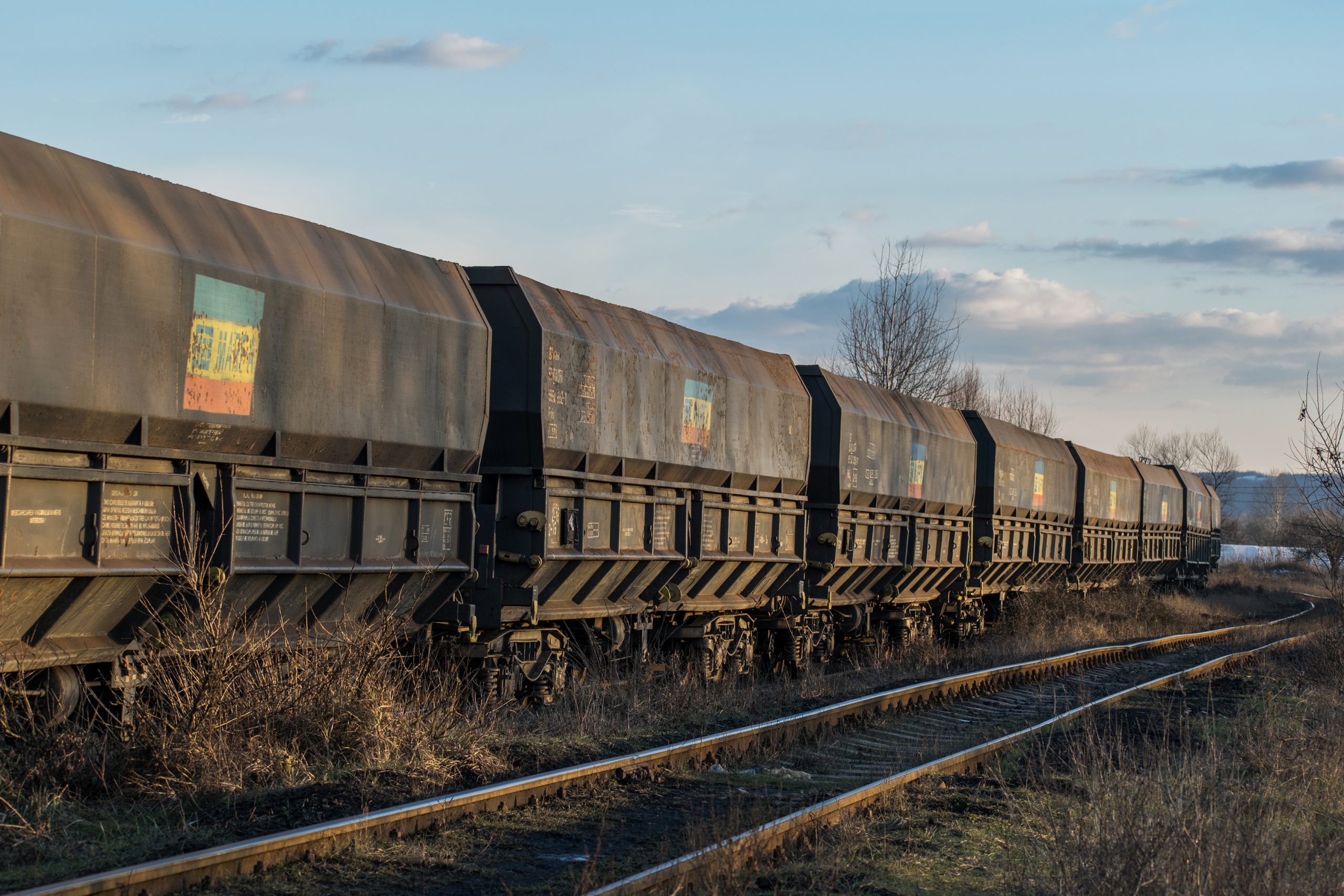CFR Marfă, Romania’s state-owned rail freight operator, will soon be liquidated following bankruptcy. In its place will now come a new state-owned operator by the name of Carpatica Feroviar. However, its establishment raises many questions about the legality of Romania’s plans, sector experts tell RailFreight.com.
CFR Marfă’s last profitable year was 2007, 17 years ago. Since then, it has recorded loss after loss, which has inevitably led to the Romanian government having to bail the company out.
That in itself is not out of the ordinary. Government support for state-owned rail operators is accepted in EU law, as long as it does not constitute market distortion. However, in the case of CFR Marfă, the European Commission found exactly that: Romania provided aid in ways that are illegal. Ultimately, that finding would push CFR Marfă to the financial brink.
Skyrocketing debt
”Certain public support measures in favour of the state-owned incumbent CFR Marfă have given them an unfair economic advantage vis-à-vis other operators”, the Commission argued in 2020. “They consist of the cancellation of public debts and the failure of public creditors to collect debts from the company. This is in breach of EU State aid rules. Romania will now have to recover the incompatible aid.”
The findings by the Commission made CFR Marfă’s debt skyrocket overnight. The rail freight operator has to pay back the entire sum of over half a billion euros to the government. Whereas its debts amounted to 1.318,06 million Romanian lei (264,89 million euros) in 2019, in 2022 that had grown to 4.464,81 Romanian lei (897,21 million euros). Whereas CFR Marfă has tried to pay back the illegal state aid, it has not been able to do so at a pace desired by the Commission.

Pre-insolvency procedures for CFR Marfă were started in 2020 as the company’s earnings fell dramatically. The Romanian state is now trying to save its rail freight operations. It opted for a Romanian rendition of the ‘Alitalia scenario’ for the future CFR Marfă. In the case of that Italian company, it went bankrupt, closed for three months, and then the state bought the assets and created a new company.
Romania is eyeing a similar scenario for CFR Marfă, according to various RailFreight.com sources. At the same time, the Romanian state seems to be hiding its intentions, since they may turn out to be in breach of EU law and electorally unpopular. Nevertheless, on 16 October, it went ahead and approved the founding of Carpatica Feroviar.

The need for Carpatica Feroviar, according to the state
With CFR Marfă on the edge of ruin, Romania is trying to justify the establishment of the newly born Carpatica Feroviar. The government maintains that it needs to be able to rely on a rail freight operator to carry out various types of transportation. The transport ministry specifically highlights military transport, the provision of humanitarian aid, as well as grain, raw materials and fuel transportation to avoid crises.
“The company will have the legal obligation to ensure the strategic transports of the Romanian state, counterbalancing the risk of refusal of private transport companies to carry out certain railway transports or even their impossibility to take them over, in crisis situations”, the transport ministry explains.
The Romanian transport ministry did not respond to questions asked by RailFreight.com.
The need for Carpatica Feroviar, according to the sector
Rail freight sector experts dispute the government’s stated motivation. According to them, private companies in Romania have the necessary capabilities to provide the transport services, for which the Romanian state wants to use a state-owned rail operator.
Doru Cireasa, editor at the Romanian rail publication Club Feroviar, told RailFreight.com before Carpatica Feroviar’s official approval that the state is indeed trying to save its rail freight business by establishing the company, but that it may have different motivations from what it officially proclaims. According to Cireasa, the government may have an interest in keeping state rail freight alive, because it has a problematic relationship with the private sector.
Difficult relationship with private operators
“From the state’s point of view, it has had a difficult relationship with private operators, in particular with the most important of these, GFR – Romanian Railway Group”, explains Cireasa. CFR Marfă and private operators are in a joint rolling stock venture together, in which private operators are reportedly walking away with profits at the expense of the state-owned CFR Marfă. A recent court case forced CFR Marfă to stay in the arrangement, something the government is sure to be unhappy about.
Cireasa also points out that it was actually the private operators who brought about the downfall of CFR Marfă. It “must be mentioned that at the origin of CFR Marfă’s problems there is a complaint made in March 2017 by the Association of Romanian Private Rail Freight Operators. These filed a formal complaint with the Commission alleging that CFR Marfă had received state aid in breach of EU rules”, Cireasa says. Ultimately, this complaint made the company’s debt skyrocket.
“The government wants to bury this illegality in a much bigger one”
Simona Istrate, the head of the abovementioned association, expresses even bigger concerns about the government’s intentions. “After the European Commission decided what even a blind person would have seen, that the state aid of 500 million euros attributed to CFR Marfă is granted illegally, the government wants to bury this illegality in a much bigger one”, she says.
“The state already has two rail freight carriers, but it looks like it needs one more. Why does it?”, Istrate asks. “In short, the government wants to move all the wagons and locomotives of CFR Marfă to a newly established company, Carpatica Feroviar, and leave all the debts of more than 3 billion lei in an office with CFR Marfă written on the door”, Istrate explains. According to CFR Marfă’s own numbers, the company’s total debt is even higher than that: 4,5 billion Romanian lei (approximately 900 million euros).

The government’s arguments for the necessity of Carpatica Feroviar do not hold up either, according to Simona Istrate. “If CFR Marfă is strategic and Carpatica Feroviar would be even more strategic, why does the state transport its most strategic goods with private operators today?”, she asks. Supposedly, private operators do the job for a lower price than CFR Marfă as well.
“Setting up a new company with the assets of a failed company is just a cheap trick that won’t fool anyone and in the end it is us, the taxpayers, who will pay for all the shenanigans of a government blind, deaf and dumb to the real problems of the rail sector”, she concludes. Publication Club Feroviar calls it a “financial juggling act”.
Illegal business?
Such a move would be a violation of the EU’s competition rules. If Carpatica Feroviar is founded with the assets, staff or contracts of CFR Marfă, then Romania has likely got another case of illegal state aid on their hands. What will happen to the assets of CFR Marfă remains to be seen, even though Istrate expects them to end up with the new state-owned company. The sale process of the company’s assets upon liquidation is still to be determined.

In terms of staffing, according to Doru Cireasa, it is likely that the management of CFR Marfă will find a new home at Carpatica Feroviar: “It is expected that here will be found people from CFR Marfă management, brought through formal selection procedures, even simulated ones.”
For the time being however, it seems that Romania is playing it safe, and is avoiding appointing people from CFR Marfă to the management board of Carpatica Feroviar. Publication Club Feroviar writes that the initial management board consists of “road experts, Iraq veterans and politicians from the transport minister’s office.”
As for the contracts of CFR Marfă, it seems unlikely that private companies can take over the entire 31,2 per cent market share of the company to be liquidated, raising more questions about the role of Carpatica Feroviar in taking over existing state rail services.
The future of Romanian state rail freight
One thing is clear: CFR Marfă will cease to exist. “This is also the requirement of the European Commission. If it fails to pay its debts, then the assets are sold in a bankruptcy process”, Doru Cireasa explains. What eventually ends up happening with Carpatica Feroviar, which got an initial capitalisation of a mere 125,000 Romanian lei (approximately 25,000 euros), remains to be seen.
